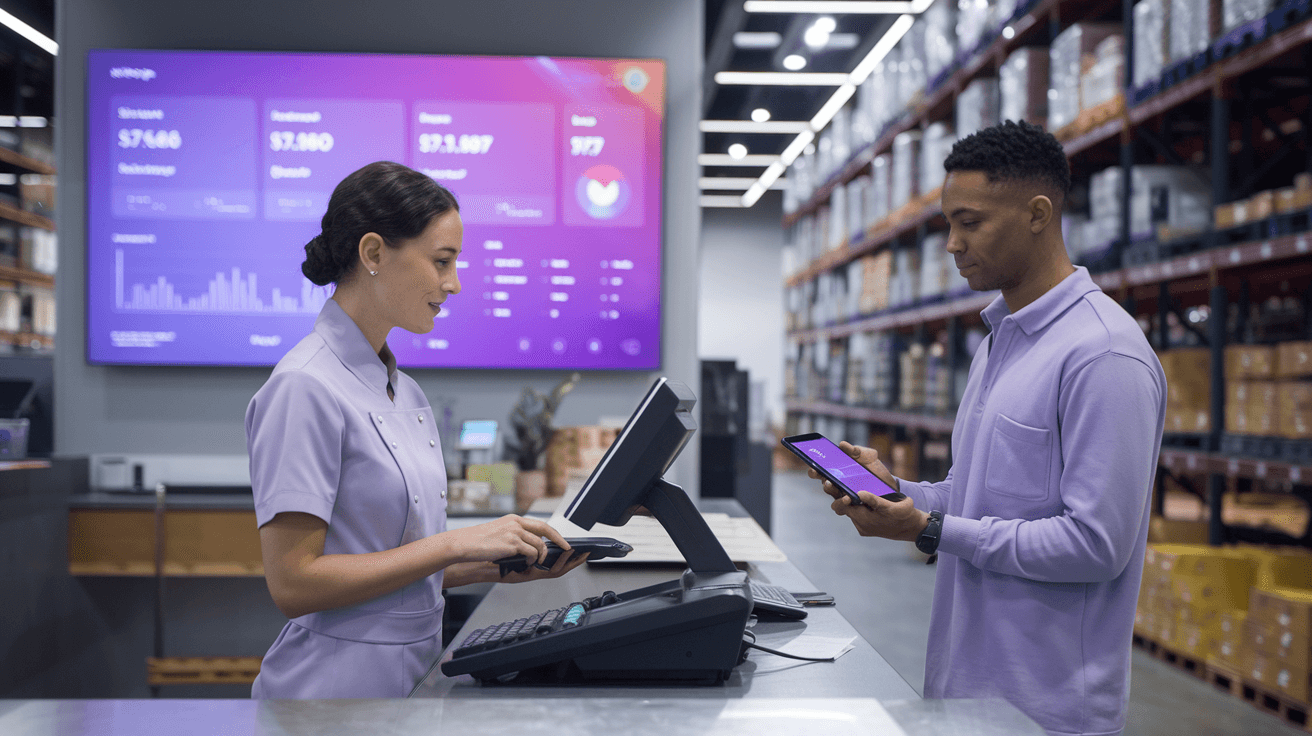What Is a Warehouse?
A
warehouse is a dedicated facility- typically a commercial building- used to store goods temporarily, including raw materials, finished products, or components, until they are needed for distribution or sale. Warehouses play a vital role in modern supply chains by consolidating products, streamlining logistics, and enabling efficient inventory management and order fulfillment.
In Malaysia, many retailers manage their own warehouses, ensuring direct control over stock movement, costs, and fulfillment speed. At the same time, some businesses outsource their warehouse operations to third-party logistics providers (3PLs) to reduce operational hassle.
To help retailers who manage their own warehouses, we’ve compiled 15 practical tips to improve warehouse efficiency, reduce errors, and enhance productivity.
15 Practical Tips to Run an Efficient and Effective Warehouse
1. Organize Warehouse Layout with ABC Analysis
A well-planned warehouse, guided by ABC analysis, reduces walking time, minimizes errors, and speeds up order fulfillment.
A: High-Value, Low Sales:
These products have a high cost and generate good revenue but sell slowly. Store them in secure locations and manage stock levels carefully to avoid tying up too much capital.
B: Medium-Value, Steady Sales:
These items have a predictable demand and should be placed in moderately accessible locations to ensure efficient picking.
C: Low-Value, High Sales:
Fast-moving products that require frequent restocking. Keep them near packing stations for quick access and faster order fulfillment.
2. Track Every Step of Your Stock Movements
Every movement- from purchase to delivery- should be logged for full transparency. Without clear records, missing or misplaced items can cause delays and losses.
- Record all inventory movements, from receiving to dispatch.
- Ensure staff update stock status immediately after each action.
- Use clear labeling and categorization to track items easily.
3. Understand Different Stock Statuses
Retailers often struggle with inaccurate stock numbers. The key is understanding different stock statuses:
- On Hand – The total stock physically in the warehouse.
- Booked – Items allocated to customer orders but not yet shipped.
- In Process
– Orders in the picking, sorting, or packing stage.
- In Returns – Inspected returned items that can be resold.
- In Receiving – New stock being inspected before being added to inventory.
Some retailers separate defective or slightly imperfect items into a designated area for warehouse sales later. With all these statuses, warehouse teams and sales staff always know what’s available.
4. Prioritize Order Processing
Not all orders are equal. Some priority stores need urgent replenishment before others. Many retailers process orders in this order:
- Morning Orders – Sent to top-tier retail stores first.
- High-demand SKUs – Packed and shipped ASAP.
- Bulk/Regular Orders – Handled systematically throughout the day.
5. Equip Warehouse Staff with the Right Tools
Providing warehouse staff with the right tools enhances both safety and efficiency.
- Safety First – Train staff on ladder use, forklift handling, and hazard awareness to prevent accidents.
- Work Smarter – Use mobile apps/ devices for real-time updates, barcode scanning, and optimized picking routes to boost efficiency.
6. Use Smart Picking and Packing Methods
For retailers handling multiple sales channels like B2B, B2C, franchise stores, and e-commerce, inventory should be sorted accordingly:
- B2B Wholesale & Outright Sales
– Bulk stock should be allocated in dedicated zones to accommodate large order volumes.
- B2C Retail/ Franchise Shops – Stock for physical stores should be easily accessible for regular replenishments.
- E-commerce Fulfillment – Items should be packed efficiently for direct-to-customer delivery, with high-demand products placed near packing stations.
- Consignment Stock – Should be handled separately for easy reconciliation, ensuring accurate stock tracking and reporting.
7. Track Warehouse Performance in Real Time
A big TV screen in the warehouse displaying live performance dashboard helps motivate staff. With real-time tracking, warehouse managers can monitor:
- Pick and pack speed per worker- Identify top performers and areas for improvement.
- Daily shipments/ pending shipments- Ensure orders are on track for timely delivery.
- Bottlenecks that slow down operations- Spot delays in picking, packing, or dispatching and take immediate action.
Recognizing hard work through performance tracking improves efficiency and boosts employee morale.
8. Track Stock by Batch and Expiry Date
For retailers dealing with perishable or fast-moving items, batch tracking is critical. It allows warehouses to track:
- Which batch an item belongs to
- Expiry dates (for food, beauty, and pharmaceutical products)
- Lot numbers for better quality control
9. Separate Packing and Non-Packing Zones
A cluttered packing area slows down fulfillment. Retailers should separate zones to ensure smooth workflow and prevents unnecessary delays:
- Packing zones – Where picked items are boxed and labeled.
- Non-packing zones – For bulk stock storage and restocking activities.
10. Handle Returns and Replacements Wisely
Returns should be processed quickly and accurately to avoid stock loss.
- Assign returned items to inspection zones.
- Restock resalable items into active inventory.
- Separate faulty products for repairs, replacements, or warehouse sales.
11. Monitor Delivery Progress
Retailers and distributors today use a mix of in-house lorries and third-party logistics for deliveries. However, delays often occur due to inefficient delivery coordination. To improve efficiency, you should:
- Assign deliveries strategically – Decide whether to use in-house fleets or outsource based on cost, urgency, and destination.
- Track shipments in real time – Monitor the status of each delivery to anticipate delays and inform customers accordingly.
- Monitor delivery performance – Identify whether delays are caused by internal handling issues or poor third-party logistics service.
12. Use Mobile Apps for Accuracy Checks
Real-time quantity verification, barcode scanning, and error detection help prevent miss-pick and stock discrepancies, keeping inventory accurate at all times.
13. Regular Cycle Counting
Stocktaking shouldn’t be a once-a-year event. Many retailers conduct monthly cycle counts for better accuracy.
14. Implement a Live Dashboard
A warehouse performance dashboard helps managers spot inefficiencies in real time. Key metrics to track include:
Number of orders picked, packed and shipped daily
Outstanding unpicked or delayed orders
15. Final Tips: Continuously Optimize Warehouse Operations!
Regularly analyze operational data; identify areas for improvement; and train staff to adapt to new processes and technology.
By implementing these 15 practical tips, retailers can turn their warehouse into a well-oiled machine- one that keeps customers happy and profits growing.
Wish to find out more information? Request a demo with our sales team today! Call 012-9379260.





